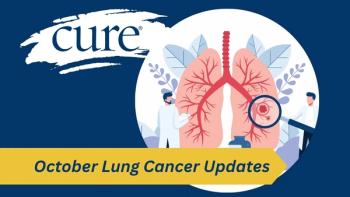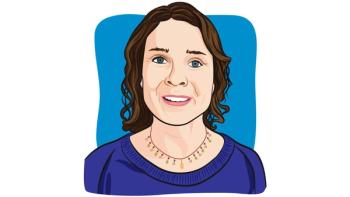
Finding More Molecular Targets for Ovarian Cancer to Personalize Treatment
In a recent study, researchers were working on identifying different molecular targets to better provide personalized care to patients with ovarian cancer. To do this, they examined more than 4,000 tumor specimins.
In a recent study, researchers were working on identifying different molecular targets to better provide personalized care to patients with ovarian cancer. To do this, they examined more than 4,000 tumor specimens.
CURE spoke with lead investigator Julia A. Elvin, M.D., Ph.D., about the study.
According to Elvin, who presented the results at the 2017 American Society of Clinical Oncology (ASCO) Annual Meeting, these samples were analyzed for classes of genomic alternations through a hybrid capture based next-generation sequencing platform of up to 315 genes. Tumor subtypes were separated as high-grade serous (2,770 patients), difficult to classify (807 patients) and nonserous (537 patients).
Can you provide an overview of this research?
Elvin, who is vice president and senior associate medical director of Foundation Medicine, discussed this genomic research in ovarian cancer and how it could potentially impact treatment decisions for patients.The study that I performed in conjunction with my collaborators was to look at the largest set of ovarian tumor specimens—over 4,100 ovarian cancers, peritoneal tumors and fallopian tube tumors. The way that we do this is that we use comprehensive genomic profiling. This is a hybrid capture based next-generation sequencing platform where we looked at 315 different oncogenes and cancer-related genes and fully sequenced them. We were able to capture all four categories of genomic alterations, including mutations, inserting/deletion events, and copy number changes, as well as rearrangements. This is incredibly important to this study because the depth and comprehensiveness of the sequencing approach is required for the next level of observations that we are now able to make.
The first level is identifying mutations in any one of these more than 300 genes. Then, the second level is to get almost a global genomic-wide landscape of how well the cell's double-strand repair process works—their homologous recombination pathway. We know that, in ovarian cancer, a large portion of these tumors have loss of the ability to repair breaks in their DNA. Gynecologic oncologists have been taking advantage of this Achilles heel, but didn’t know why it was working for a long time. Platinum-based chemotherapies actually introduce additional double-strand breaks, and it is partially for this reason that it’s believed that these chemotherapies are so effective in many patients with ovarian cancer.
One of the great things about our technology is that we can observe a signature called "loss of heterozygosity” [LOH]. This is when a cell loses its ability to use homologous recombination, which is the high-fidelity repair pathway for double-stranded breaks. It has to go through a collateral channel that is a low-fidelity way of correcting these errors. As this pathway is used over and over again in the tumor cell, a certain specific type of mutational pattern accumulates that we can observe in our sequencing. We cannot only just observe this, but we can quantitate the amount of the genome that is experiencing this type of LOH effect.
The ARIEL2 and ARIEL3 trials with the PARP inhibitor Rubraca (rucaparib) showed that patients who have homologous recombination deficiency respond to the synthetic lethality of the PARP inhibitors because they block the collateral circulation through other repair pathways. We have both ways to identify patients with this biomarker as well as have some clinical data to show that this is an important way of stratifying patients.
We applied this approach to 4,000 mixed ovarian cancers. Generally, the [samples] that come to us are late-stage and often treatment refractory, at that point. We found that 41 percent of this mixed population of ovarian tumors had either a BRCA1 or BRCA2 mutation or this observable pattern of LOH. This means that 4 out of 10 patients could potentially benefit from a PARP inhibitor.
People tend to think about platinum sensitivity in this PARP inhibitor approach as it pertains to a certain subset of ovarian cancers—the serous cancers. A lot of the clinical trials are specifically designed to exclude patients that have the less common, but incredibly difficult-to-treat nonserous tumors. It is actually these patients who have the highest unmet clinical need because they do not respond to platinum therapy as readily. We looked specifically at the nonserous patients, and found that 19 percent — nearly one in five nonserous patients — had either a BRCA mutation, or this pattern of LOH. So, [there were] not as many as the serous patients, but it was still a reasonable thing to consider for these patients who often run out of options.
The third thing that we did is we asked, “If you decide to triage these patients who have the pattern that might make PARP a good category for them, what about the patients who don't look like great PARP candidates?” Is there something that we can see — a pattern that would emerge for these patients — that would allow us to identify additional treatment strategies? By looking at tumor mutation burden and microsatellite instability, we found that between 1 percent and 5 percent, depending on the specific cell type, would have a biomarker that would suggest that they may benefit from an immune checkpoint inhibitor approach.
Further beyond that, we found lots of patients who have targetable alterations with small molecule inhibitors—PI3K, mTOR, AKT pathway activity events, MEK pathway activating events, and even a proportion of patients who look like they have HER2-activating events. Taken together, of the patients who don’t have a BRCA mutation and an LOH profile, over 50 percent of the remaining patients would have something that was potentially targetable in an on-label or clinical trial setting.
How do you envision this changing the landscape of ovarian cancer?
The added benefit is, for the patients who are in that 50 percent who don't have an identifiable next step from their molecular profile, it becomes a lot clearer what the actual options are for them to consider. These may be patients who we should think more about radiation therapy for, or additional lines of chemotherapy, or additional de-bulking surgery. Or, maybe we even start considering some of the other comfort measures or nontargeted therapy clinical trials. I see that these results really have the opportunity to change the landscape of treatment possibilities for patients with ovarian cancer. It is incredibly powerful to think of a time in the future where a patient would come into the doctor’s office knowing the enemy that they were going to face in molecular detail and be able to devise, not just the first step plan of surgery and maybe some adjuvant chemotherapy, but actually have a strategy of what they are going to do when these tumors come back, which most of them do.
What are the next steps?
To think that well over 50 percent of these patients have options revealed to them that they wouldn't have considered just based on the tumor pathology is an extraordinary advance.There is still a lot of work to be done in this area. Most critical is the need for combining clinical data. So, with a data set of this size, this means patient characteristics and clinical treatment outcomes for both conventional chemotherapy and targeted therapy.
Are there any other remaining challenges?
One of the limitations that we have is that we know the molecular story, but we are relatively blind to the clinical story in a lot of these cases. That is really what is going to allow us to build upon these findings and identify the most clinically significant characteristics for future direction of care.One of the challenges that remains is that the field is still driven by a site-specific and name-specific classification system for these patients, which limits physicians’ creativity and thus limits a patient’s treatment options.





